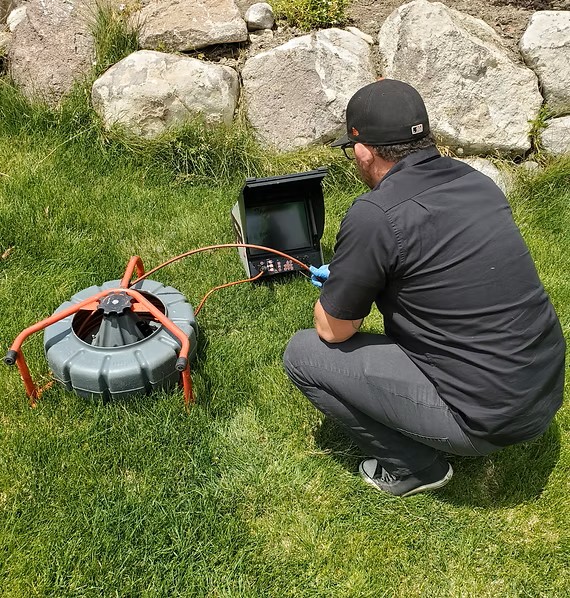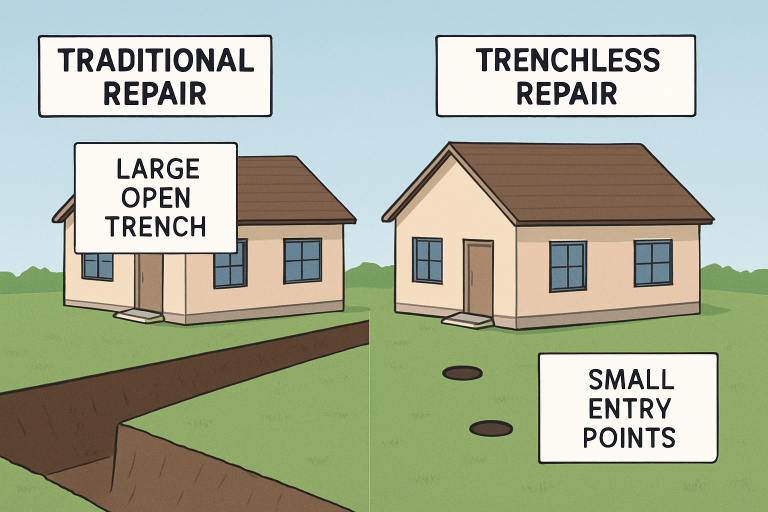
Trenchless sewer line repair is transforming how underground pipes are serviced and rehabilitated. Rather than resorting to deep excavations that tear up lawns, driveways, and sidewalks, this technique leverages advanced technology to repair pipes through minimal-access entry points. Specialists use methods like pipe bursting, cured-in-place pipe (CIPP) lining, and internal robotic tools, ensuring efficiency and restoring full function to aging or damaged sewer lines.
For homeowners and property managers seeking a practical solution with minimal disruption, Utah trenchless sewer line repair services demonstrate the convenience and innovation of this approach. Accessing pipes through small surface openings saves time, reduces costs associated with surface restoration, and helps avoid lengthy interruptions to daily life.
Traditional sewer repair projects are notorious for their impact on landscapes and infrastructure. Workers dig large trenches to access broken pipes, resulting in torn-up yards, damaged pavement, and sometimes weeks of property downtime. After repairs are complete, additional expenses from replanting grass or replacing concrete often accrue.
Trenchless sewer line repair can be completed as much as 30% to 50% faster than open-trench alternatives. This speed and minimal surface disruption make trenchless technology an increasingly popular choice across neighborhoods and commercial properties.

The rapid growth of trenchless sewer repair is powered by high-tech solutions like cured-in-place pipe (CIPP) lining, which creates a new seamless pipe inside the old one, and pipe bursting, which replaces host pipes by breaking them apart and pulling in new lines. Robotic cutters and real-time video cameras provide precise diagnostics, ensuring targeted and efficient repairs. As noted by Popular Mechanics, these advancements are dramatically changing maintenance for municipal and private sewer systems.
One of the most remarkable advantages of trenchless sewer repair is its eco-friendly nature. Unlike traditional methods that require extensive digging, this approach minimizes landscape disruption, preserving valuable topsoil, mature trees, and carefully maintained gardens. Reducing the need for heavy excavation equipment also reduces fuel use and harmful emissions, helping protect air quality. Additionally, the modern piping materials used in trenchless repairs are engineered for durability, often lasting several decades without frequent maintenance. This extended lifespan translates to less material waste, fewer future repairs, and a long-term solution supporting homeowners and the environment.
While trenchless repair methods may have a slightly higher upfront cost per foot than traditional digging, the long-term financial benefits are considerable. Homeowners save substantially by avoiding the added expenses of repairing damaged driveways, landscaping, and other property features often disrupted by excavation. Additionally, trenchless technology's efficiency and minimal invasiveness reduce labor costs and project timelines. Industry research shows that most homeowners achieve a strong return on investment within a few years, thanks to fewer restoration needs and the extended durability of trenchless installations.
Trenchless repair offers an innovative and efficient alternative to traditional excavation methods, particularly when pipes are damaged but not fully collapsed. Plumbers can restore functionality by utilizing existing entry and exit points without tearing up lawns, driveways, or established landscaping. This approach is especially valuable for homeowners who want to preserve property aesthetics and avoid costly restoration. Before recommending trenchless solutions, most professionals perform thorough camera inspections to assess pipe conditions, ensuring the method is practical and appropriate for each unique situation.
Trenchless sewer line repair has emerged as the modern standard for addressing sewer issues without the mess and stress of conventional excavation. With swift turnaround times, cost efficiencies, robust durability, and impressive environmental benefits, more homeowners and property managers recognize its value. As this technology reaches even broader adoption and continues to evolve, the future of sewer maintenance looks cleaner, quicker, and more cost-effective than ever before.

This post has been authored and published by one of our premium contributors, who are experts in their fields. They bring high-quality, well-researched content that adds significant value to our platform.